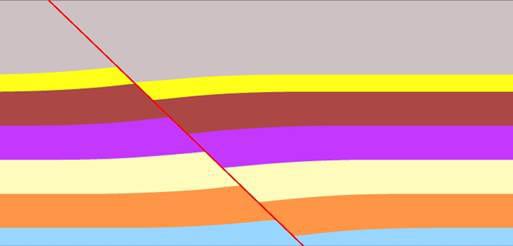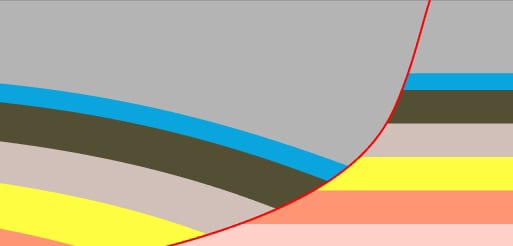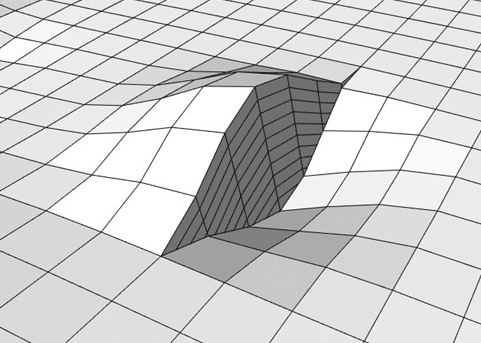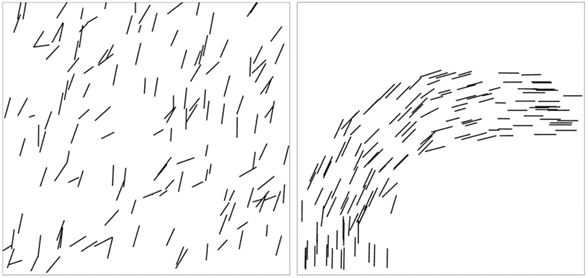HAVANA – Fault Modelling
- Fields involved Geomodelling
HAVANA is a software tool for describing faults and their impact on fluid flow in petroleum reservoirs. It has a unique way of representing faults.
HAVANA can be used for:
- Studies of flow effects on all fault scales.
- Adding faults to simulation grids by displacing grid cells or by modifying transmissibility multiplicators.
- Studies of the geometric uncertainty of the faults on volumes.
HAVANA has a unique way of representing faults. Each fault is described by:
- The fault plane geometry.
- The displacement along the fault plane.
- The volume influenced by the fault.
- A fault operator that is able to: Displace a 2D surface or 3D corner-point grid, reverse the displacement to remove a fault from a 2D surface or 3D grid.


The figures show pure linearity and a artistic fault modeled with Havana.
In Havana, faults are not just planes or surfaces, but objects with properties that can affect, and modify, reservoir models.

Havana capabilities
Havana capabilities
Simulation of new faults
This functionality uses an elliptic fault model and is mainly used to simulate sub-seismic faults, allowing among other things:
- Simulation of faults based on trends.
- Simulation of “children faults” around larger faults.
- Possibility to control grouping of faults.
Fault surface uncertainty modeling
HAVANA can be used to study the uncertainty in fault surface geometry:
- Modeling and visualization of fault surface uncertainty envelopes.
- Deterministic change in fault location.
- Deterministic change in fault dip.
- Simulation of fault surfaces.
Fault displacement modeling
HAVANA can create displacement fields for faults based on input fault lines:
- Prediction of fault displacement field.
- Update of fault lines and horizons.
- Simulation of fault displacement fields.
Update of simulation grids
The simulation grid can be updated based on changes in the fault model:
- Addition of new faults to the simulation grid.
- Alternation of permeabilities based on simulated (small) faults.

